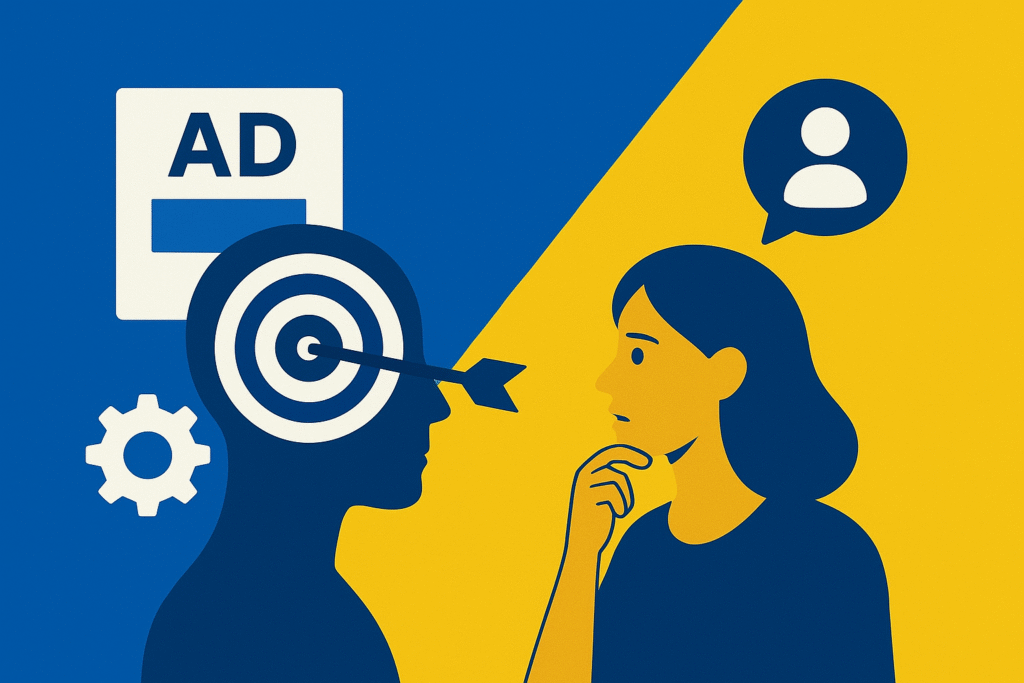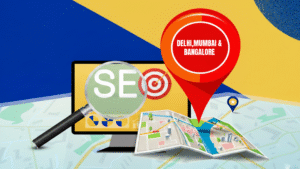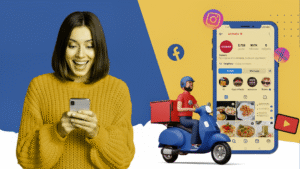Ever found yourself scrolling through Instagram and suddenly stopping at an ad that feels like it was made just for you?
That’s not a coincidence it’s the power of ad targeting psychology.
Brands use consumer behaviour insights to design ads that trigger emotional and subconscious responses, leading to higher engagement and conversions.
Understanding how your audience thinks, feels, and reacts can make or break your ad campaigns.
Let’s dive into the science behind ad targeting and how you can use consumer psychology to drive better results.
How Consumer Psychology Influences Ad Engagement
Every time a person sees an ad, their brain processes it within milliseconds. If the message resonates, they engage. If not, they scroll past.
- Consumers don’t just buy products; they buy emotions.
- The right ad at the right time can trigger instant action.
- Our brains love familiarity personalized ads work better.
Example: If you see an ad for a vacation right after searching for travel destinations, your brain connects the dots, making the ad feel more relevant.
Key Psychological Triggers Behind Successful Ads
The Power of Personalization (Tailored Just for You!)
Ever noticed how Netflix recommends shows you love? That’s personalization at work.
Ads with a personal touch get 80% more engagement than generic ones.
Brands use data-driven targeting to make ads feel custom-made for users.
How to Use It:
- Personalize ad copy using the audience’s name, location, or interests
- Use retargeting ads based on user behaviour
- Show recommendations based on past purchases or searches
Example: Amazon displays “You might also like” product suggestions based on past purchases, increasing sales by 35%.
The Scarcity & FOMO Effect (Fear of Missing Out!)
When something feels limited, we want it more.
Urgency-based ads make people act immediately.
The fear of missing out (FOMO) triggers emotional buying.
How to Use It:
- Use limited-time offers (“Only 3 left in stock!”)
- Add countdown timers to ads
- Create exclusive deals for loyal customers
Example: Airbnb uses “Only 2 rooms left at this price” to push last-minute bookings.
The Emotional Hook (Feel Before You Buy!)
People remember how ads make them feel, not just what they say.
Emotional ads get 2x more shares than rational ones.
Ads that tell a story create stronger brand recall.
How to Use It:
- Use storytelling to make an emotional connection
- Choose images that evoke happiness, excitement, or nostalgia
- Align ads with moments that matter (festivals, life milestones, etc.)
Example: Nike’s “Just Do It” ads inspire action by tapping into motivation and ambition.
The Social Proof Factor (People Trust People!)
When people see others trusting a brand, they feel more confident in buying.
92% of consumers trust recommendations from peers over brand messages.
User-generated content (UGC) makes ads more relatable.
How to Use It:
- Include testimonials and reviews in ads
- Show real customers using your product
- Highlight influencer endorsements
Example: Apple’s #ShotOniPhone campaign showcases real user photos, making the product more desirable.
The Anchoring Effect (Setting Price Perception!)
How you present a price shapes customer decisions.
People compare prices instead of evaluating absolute value.
Showing a higher price first makes the second offer seem like a deal.
How to Use It:
- Display original price vs. discounted price
- Offer bundled pricing (e.g., Buy 1 Get 1 Free)
- Highlight “Best Value” or “Most Popular” plans
Example: eCommerce stores strike out the old price and show a discounted one, making the deal look irresistible.
How to Implement Consumer Psychology in Your Ad Targeting Strategy
- Segment Your Audience Properly → Target users based on behavior, interests & demographics.
- Test Different Ad Formats → Experiment with carousels, videos, and interactive ads.
- Use Retargeting Ads → Remind visitors about products they viewed.
- Optimize CTAs (Call to Action) → Make them clear, action-driven & time-sensitive.
- Leverage AI & Data Analytics → Predict what users will engage with next.
Example: Spotify analyses listening habits to serve ads based on mood & activity.
Real-World Success: Brands Winning with Psychology-Based Ad Targeting
- Coca-Cola’s “Share a Coke” Campaign → Personalized names on bottles increased sales by 7%.
- Booking.com’s Scarcity Tactics → “Only 1 room left!” messaging boosts urgency.
- Dove’s Real Beauty Ads → Emotional storytelling drove brand loyalty & viral engagement.
Final Thoughts: The Mind is the Ultimate Battleground
If you want ads that convert, you need to understand your audience’s psychology.
- Personalized ads feel like a one-on-one conversation
- Emotional triggers make ads memorable & impactful
- FOMO & urgency drive immediate action
- Social proof builds trust and confidence




